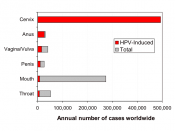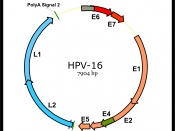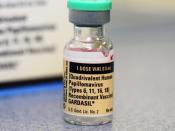The article "Cervical Cancer Vaccine breakthrough" (The Age, 07/10/05), published by the Australian Associated Press, contends that the pioneering cervical cancer vaccine, Gardasil, has demonstrated to be one hundred percent effective against developing the majority of cervical cancers, during recent clinical trials. The following commentary aims to critically evaluate the above article in reference to the validity and expression of its written content, together with an assessment of the resultant legal and ethical issues.
Dr. Ian Frazer, the Australian scientist who created the new vaccine, is quoted using amateur language to enable lay people to relate to its content. "It can't cause any disease...it's just the shell of the virus". The language employed throughout the article ensures that the chief contention, that Gardasil protects against the most common strains of human papilloma virus which cause approximately 70% of cervical cancers, is implicit and that the unqualified person is not overwhelmed by undue medical terminology.
This is in accordance with the type of publication in which the article was accessible, a broadsheet newspaper. It is generally perceived that The Age is more intellectual and credible in content as compared to its tabloid counterparts [Huggard et al, 2002]. Coupled with Australian Associated Press' well established reputation as the country's leading news agency, a hypothetical patient would be further inclined to accept the effectiveness and necessity of this new vaccine founded on the assumed authority of this source.
The article serves to promote the scale and success of the latest Gardasil clinical trial undertaken, which involved '12000 women from 13 countries'. It emphasised the study design and method involved in an attempt to remove any skepticism of the perfect results obtained. It is no coincidence that the magnitude of the study, both in time elapsed and the number of participants involved,


